Your Comprehensive Ski Gear Guide

Ski slopes always offer endless excitement: the silence, the breathtaking scenery, and the adrenaline of the descents create a mix of emotions that once experienced, it's hard not to repeat! However, one must be prepared to face this new experience: what is the most suitable ski equipment for a beginner, how to dress to avoid sweating or feeling cold? How to choose skis for tackling the slopes for the first time?
What beginners need to hit the slopes, tips on choosing equipment to start skiing
Being prepared and facing the slopes with awareness for the first time is the first step towards an unforgettable experience!
Get ready for Your Mountain Vacation
If you've never skied before, it's highly advisable to take lessons with a qualified instructor who will help you understand the basic techniques of skiing, control speed, and stop to make your first mountain experience safer.
Choose the right slope, avoiding dangerous descents; beginner slopes are marked with green color, always make sure to follow the signs on the slopes.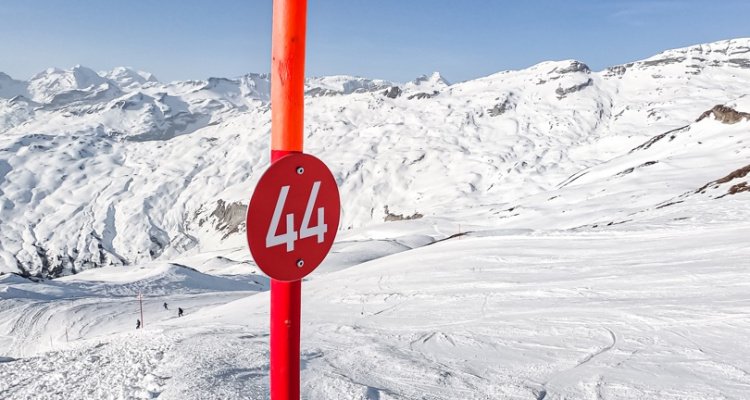
Ensure you have the appropriate ski equipment, stay hydrated throughout the day by drinking water regularly, and use energy snacks. Always maintain a safe distance from other skiers and make sure to know and follow the rules of behavior on lifts and slopes. Learn how to control your speed and stop safely. Familiarize yourself with the signage on the slopes and in the mountains.
Remember to have fun! Skiing is a fun and rewarding activity. Enjoy the scenery, the fresh air, and the feeling of freedom as you ski down the slopes!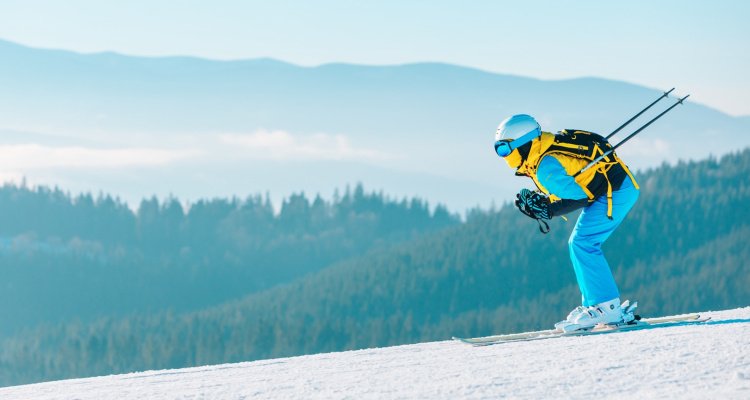
Ski Equipment for Beginners
To make the most of your first experience on the slopes, you need to have suitable ski equipment:
Skis
Skis suitable for beginners are shorter and more flexible, making them easier to maneuver. All-mountain skis are often a versatile choice as they can be used on a variety of terrains, from groomed slopes to fresh snow.
Ski Boots
They should be comfortable but snug enough to provide ankle and foot support without causing discomfort. Many ski boots offer the option of being thermoformed to fit the skier's specific foot shape. This process, called "custom fitting," allows for greater precision and comfort. Ski boots require regular maintenance to ensure their durability and optimal performance: cleaning the inner liners, replacing soles when necessary, and storing them in a cool, dry place to prevent moisture damage.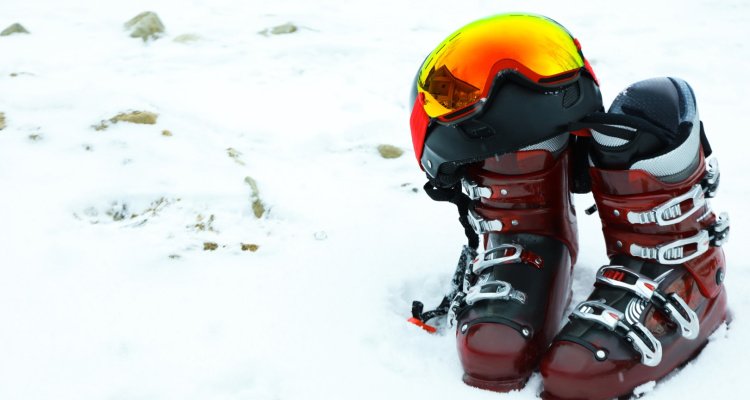
Ski Poles
Make sure they are the right length, with the rubber bottoms gripping the snow well.
Ski Helmet
Wearing a helmet is essential to protect your head from potential falls or impacts. In many countries, the use of ski helmets is mandatory for children, and in some ski resorts, for adults too. Ski helmets are designed to offer a balance between safety and comfort. It's important to choose a helmet that fits properly to the shape of the head and is adjustable for a secure and comfortable fit.
Ski Goggles or Mask
Protecting your eyes from snow, wind, and intense sunlight is crucial. Make sure they have lenses suitable for brightness conditions and provide good visibility.
Gloves
Choosing the right ski gloves is essential for keeping your hands warm, dry, and protected while skiing.
Sun Protection
Mountain sunlight, even on cloudy days, is very intense, so you need to protect yourself with high SPF sunscreen applied to your face, neck, and hands. Additionally, use a specific balm to protect your lips.
Ski Clothing Guide
Dressing appropriately is the key to comfort, protection, and safety during your day in the snow. In the mountains, you need to be able to regulate your body temperature throughout the day, so it's necessary to dress in layers starting with the thermal layer, which should be worn directly against the skin, to keep the body dry.
The insulating layer like a fleece or sweater will help retain heat, then the windproof and waterproof jacket to protect against weather conditions.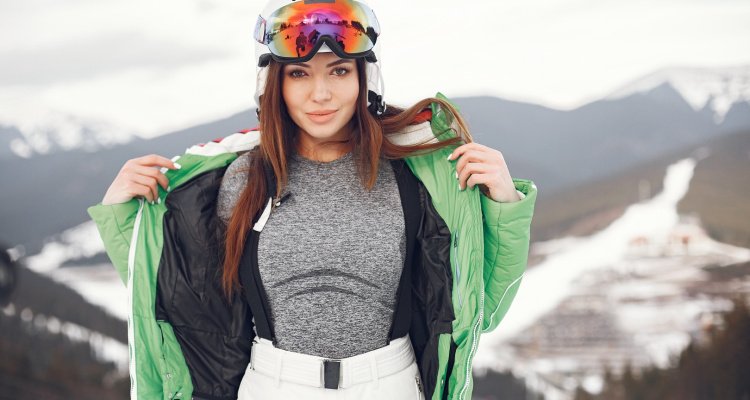
Thermal Underwear
Choosing the right thermal underwear is essential for comfort and thermal protection during outdoor activities in cold conditions. Typically used materials are merino wool, polyester, and nylon; choose the material that suits your needs, considering that wool is more breathable, while polyester and nylon are lighter and dry more quickly. Thermal underwear should fit well, neither too tight nor too loose, and should be thin enough to be worn comfortably under other layers without restricting movement.
Ski Pants
Choose ski pants made of waterproof and breathable materials; waterproof and breathability ratings are indicated with a classification in millimeters (e.g., 10,000 mm/10,000 g), where higher values indicate better water protection and greater breathability. Ski pants should have a snug but not restrictive fit, allowing freedom of movement necessary for safe skiing. Inner snow gaiters are important features of ski pants that prevent snow from entering the boots during the descent. Make sure the ski pants you choose have adjustable inner snow gaiters to fit your ski boots.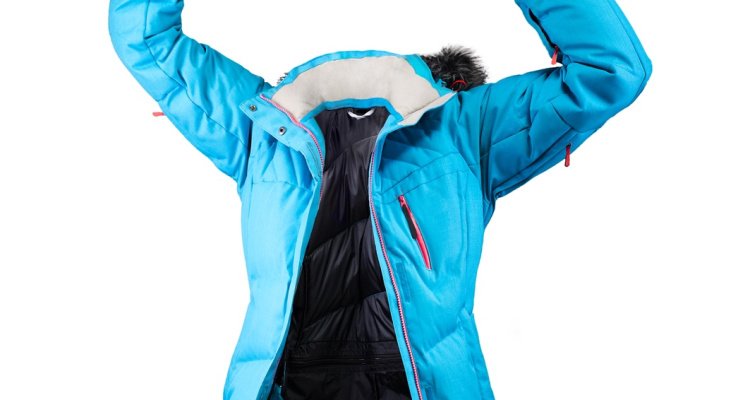
Ski Jacket
Look for a ski jacket made of waterproof and breathable materials to protect you from snow and moisture while allowing sweat to evaporate. Choose a ski jacket with a comfortable fit and good freedom of movement, with an adjustable and removable hood useful for protecting the head and neck from wind and snow. Make sure the hood is large enough to be worn over the ski helmet. For added comfort, make sure the jacket is equipped with a snow skirt that should fit snugly around the waist. Waterproof zippered pockets are useful for storing personal items such as phone, wallet, or lift pass.
Ski Socks
Choosing the right ski socks is important for keeping your feet warm and dry. It's preferable to use socks made of breathable and thermal materials; merino wool is naturally breathable, while polyester and nylon offer breathability and moisture resistance. Ski socks are available in different thicknesses: thicker socks offer higher levels of thermal insulation, while thinner socks are ideal for milder conditions or for those who prefer a tighter fit. Make sure the ski socks have flat or low-profile seams to avoid chafing and irritation on the skin during physical activity.
Gloves or Mittens
Choose waterproof and water-resistant materials, such as synthetic fabrics treated with waterproof membranes or gloves with Gore-Tex coatings. This will help keep your hands dry even in wet snow or sleet conditions. Ski gloves should have adjustable straps or Velcro closures around the wrist to ensure a secure fit and prevent snow or cold air from entering. Some ski gloves are designed with touchscreen materials on the fingers to allow the use of electronic devices without having to remove the gloves.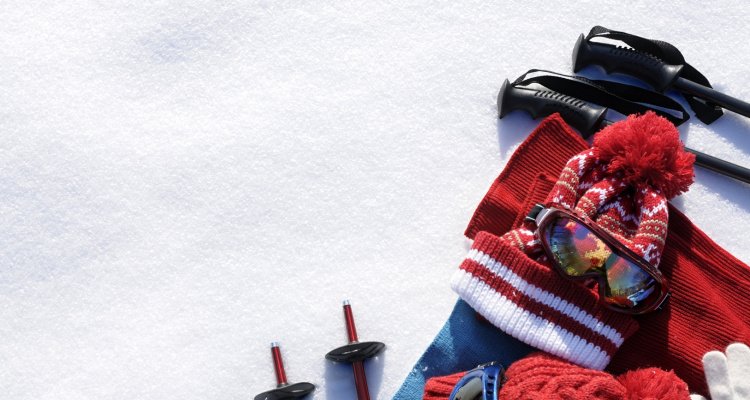
Hat or Beanie
Wear a thermal hat or beanie that covers your ears well to protect them from cold and wind. If you wear a ski helmet, make sure the hat is compatible and can be comfortably worn under the helmet without compromising fit or safety.
By following these tips and carefully choosing suitable clothing, you can enjoy your day on the ski slopes to the fullest without worrying about weather conditions.
What Ski Gear Do Beginners Need
Skiing for beginners should ensure stability, ease of control, and error tolerance. It's always advisable to consult an expert or take a test at a specialized store to find the most suitable ski for your level and needs.
To choose the right skis for beginners, you need to consider some factors:
Ski Length
Ski length for beginners should be shorter and lighter as they are easier to maneuver and control. A rough rule is that skis should be shorter than your height and reach up to your chin or nose when standing straight.
Rounded Tip and Tail Skis
These skis allow for errors without penalizing too much. This type of ski offers a softer and less responsive feel, which can be helpful for beginners as they learn to control speed and direction.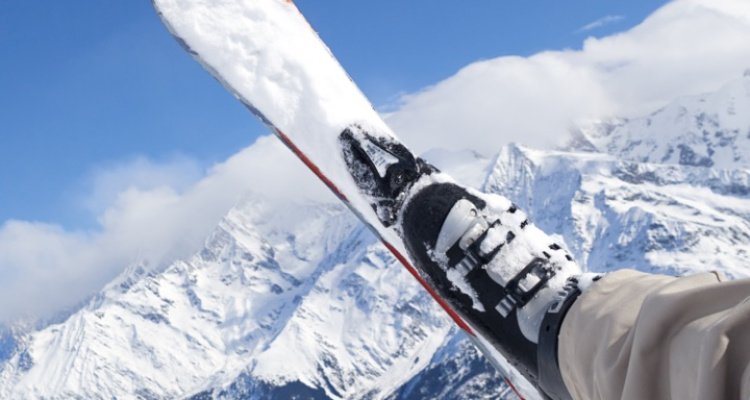
Flexibility of Skis
Skis for beginners tend to be softer and more flexible than those for more advanced skiers. A more flexible ski offers greater error tolerance and allows the beginner to gain confidence in their balance and basic technique.
Width Underfoot
The width underfoot of the skis affects their float on the snow. For beginners who spend most of their time on groomed slopes, skis with a medium underfoot width (around 75-85 mm) are generally more suitable. These skis offer good stability and ease of control.
Binding Adjustments
Ensure that the ski bindings are adjusted correctly according to your weight, height, skill level, and skiing style. This is essential to ensure your safety while skiing.
Skis with Facilitation Technologies
Some skis are designed with specific technologies to help beginners improve their skiing experience. These technologies may include rocker ski profiles to facilitate turns and stability, or materials that absorb vibrations for a more comfortable feel.